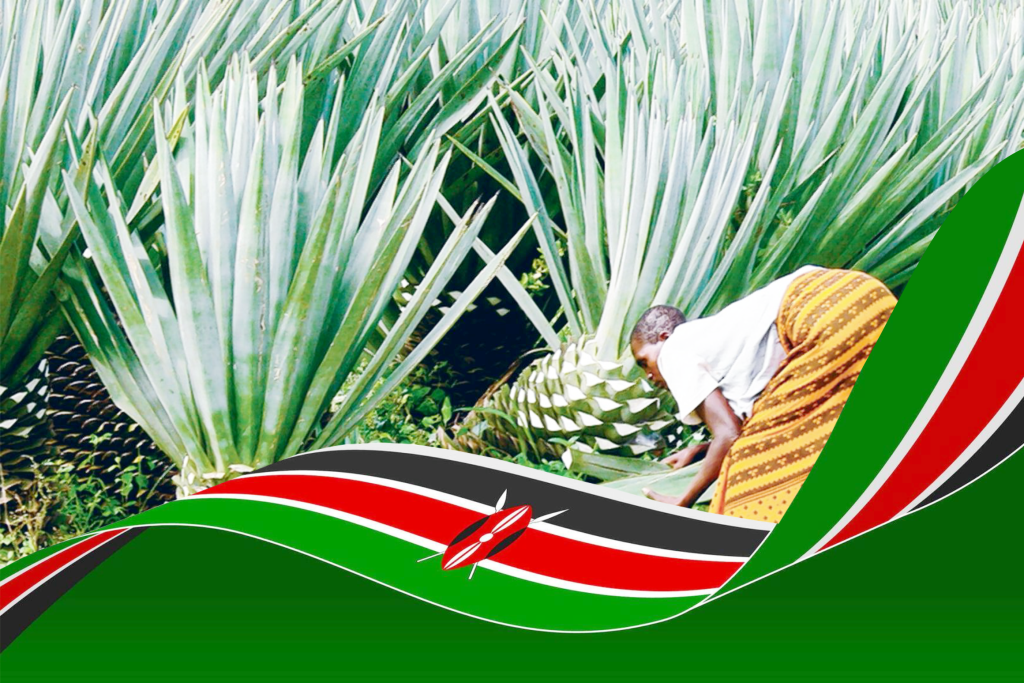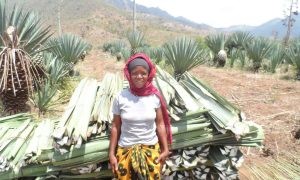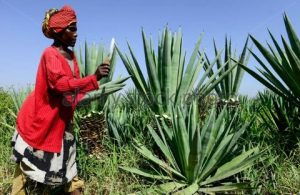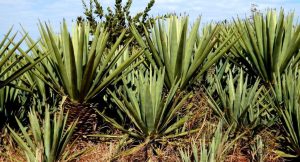Kenya’s Sisal Plant’s Export Boom to Nigeria is Reshaping Lives and Trade

Nairobi, at the dusty roadside markets of Taita-Taveta County, where sisal plants stretch in neat rows across the undulating land, you will find families who once treated sisal as a boundary hedge or soil stabiliser now waking before dawn to bind fibre bundles for export. Their hands are calloused, their routines long, but the emerging trade with Nigeria is offering something new: predictable income and hope.
Kenya’s sisal exports have surged in recent years, with Nigeria increasingly becoming the single largest destination. Data from the Agriculture and Food Authority (AFA) shows that in the fourth quarter of 2023, 35.45 per cent of all Kenyan sisal fibre exported by volume went to Nigeria, more than any other country. Earlier, by mid-2024, roughly half of Kenya’s sisal exports were already heading to Nigeria.
![]()

This growth is no accident. It is the outcome of shifting market dynamics, evolving political priorities, and a long chain of farmers, businesses and governments navigating opportunity and challenge.
For decades sisal played a modest role in Kenyan rural life. In Taita-Taveta, Kilifi, Baringo and Kwale counties, smallholder farmers planted it primarily for utilitarian use: fences, ropes, soil erosion barriers. But as global demand for natural fibres rises driven by environmental concerns and a push away from synthetics, sisal has stepped into the spotlight.
These changes haven’t come evenly. Many smallholders still lack processing facilities; during the rainy season, transportation becomes expensive; and markets remain volatile. But in response, Kenya’s government and private sector have taken steps: improving access to seedlings, helping with fibre quality standards, and encouraging better logistics.
Nigeria’s growing demand isn’t just about volume; it’s about timing and reliability. Kenyan exports of sisal fibre and tow dropped in 2023 to around 23,000 tons, about 20 per cent below the previous year. Yet even amid that decline, Nigeria bought 6,630 tons, nearly 29 per cent of Kenya’s total fibre exports.
AFA bulletin data shows that in late 2023 Nigeria accounted for over one-third of Kenyan sisal export volumes, far ahead of China and Saudi Arabia. Nigerian firms are increasingly turning to natural fibres for construction, packaging, baling, and other industrial uses, in part because of rising environmental regulations and cost pressures of synthetic alternatives.
Politically, this boom comes at a moment when both countries are seeking more intra-African trade. The African Continental Free Trade Area (AfCFTA), while not yet perfect, adds diplomatic impetus to strengthen trade corridors and reduce tariffs or trade barriers. Kenyan export policy has also leaned toward improving rails, roads, port efficiency (especially at Mombasa), and extension services for farmers.
Back on the ground, families like Mary’s see both promise and precarity. Harvesting sisal is labour-intensive; fibres must be graded, transported, sometimes stored for weeks. Weather patterns have become less predictable. The droughts shrink yield, while heavy rains make harvesting or transport difficult.
Moreover, while exporting raw fibre brings cash, much of the added value such as weaving, rope-making, packaging, are still captured elsewhere, often outside rural communities. Wanjiku hopes that more processing plants will be built closer to farms, so her grandchildren might earn more than just the raw fibre price.

Yet the income improvements are real. According to AFA data, in the first half of some years, export earnings rose significantly, boosted by both higher volumes and rising international prices. For many rural families, sisal income now means children can stay in school, pay for health, and invest in small diversification of crops.
If Kenya wants to lock in this upswing, experts say it must tackle several critical challenges outlined below:
- Value addition: Moving beyond raw fibre manufacturing too, like locally made rope, twine, packaging and other sisal-based products will retain more of the profit chain in Kenya.
- Quality standards: Nigerian buyers demand consistency. Investment in classification, grading, moisture control and reliable transport (especially through ports) is essential.
- Infrastructure: The roads from farms to collection centres, reliable transport and port turnaround times all impact how competitive Kenya can be.
- Climate resilience: Sisal is hardy, but yield depends on stable rainfall and temperature. Supporting smallholders with drought-resistant varieties, better water access and extension support will buffer against climate shocks.
- Trade policy coherence: Ensuring that AfCFTA agreements are implemented with low non-tariff barriers, well organised logistics and clear documentation, and this will reduce friction.

Nigeria too has its stakes. For its growing construction, agriculture, and packaging sectors, sisal offers a relatively cheap, locally accessible, environmentally friendly fibre. But there are challenges on that side too: ensuring phytosanitary and import quality standards, reliable supply chains, and stable foreign exchange flows to pay for imports.
Nigeria’s trade authorities are aware of this: some regulatory alignment, tariff adjustments, and efforts to ease import logistics have been floated in policy conversations. If Nigeria can make importing sisal fibre more efficient, it stands to benefit from lower costs and more sustainable industrial inputs.
What started as smallholder gardens has transformed into a cross-continental trade artery. In respect to the Wanjiku’s families, Kenya’s sisal export to Nigeria is a possibility that surpasses business in the act of turning survival into a thriving agribusiness, by leveraging agricultural tradition into exporting power and transforming local labour into a link in a global chain.
But the chapter ahead depends not only on demand in Lagos or Abuja, but on seed, soil, standards, roads and policies in Taita-Taveta and beyond. Kenya has caught Nigeria’s attention. Now the work is to build an exporting business-bridge strong enough to carry both countries forward.






